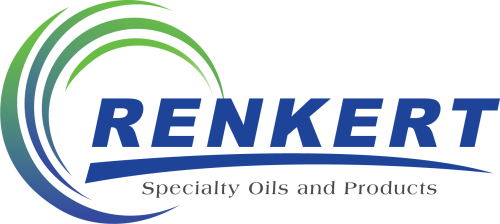While the oil industry saw dramatic reductions in demand in 2020, triggering price fluctuations and supply tightening rarely seen in world base oil markets, the new year presents a new challenge.
As demand among manufacturers increases, the return to pre-pandemic spot supply levels is still a long way off.
Precisely when global demand will rise to approach pre-pandemic levels is, of course, hard to say. For now, global markets continue to maintain tight supply conditions to keep pricing stable.
Add to this equation major weather events, like the winter storms in February that stalled base oil production and distribution out of Texas and other key regions across the U.S., and the situation is clear. Supply security remains a key issue for all oil-based product manufacturers.
The State of Base Oil Markets
Supply security remains a top-of-mind issue for manufacturers everywhere due to tight supply conditions and rapidly rising prices world-wide.
Asia-Pacific
Producers have no intention to return to the price-slashing pain of the early days of the pandemic any time soon. By the end of 2020, base oil prices rebounded for the region to their highest levels since 2018, and refineries intend to keep them there through ongoing balanced production capacity.
EMEA
In the Middle East, the devastation in the oil industry last year was among the starkest in the world. Refineries cut back hard in the wake of negative crude oil prices. Despite the push to sell off stock, fears of supply overhang will keep supply conditions very tight as the region struggles to recover.
European refineries continue to hold back in the wake of sharp year-over-year demand plunges. In Spain, lubricant demand fell 12.7 percent in 2020, despite a significant rebound in the second half of the year. Supply will remain tight until Europe sees those strong Q3 and Q4 sales hold well into 2021.
Americas
As in other parts of the world, refineries throughout the Western Hemisphere are limiting production because of reduced demand for fuels (the major refinery product) resulting in low production of lubricants. Prices are stable or, in many cases, rising. Local production has slowed significantly outside the U.S., in countries like Brazil. This has driven up prices outside of the U.S., drawing more exports that are chasing the better returns.
As a strong exporter, U.S. producers are among the most active. Routine refinery turnaround maintenance of U.S.-based refineries is needed. While this will create a long-term benefit to North American supply chains, it cuts into short-term capacity and output. Meanwhile, unprecedented winter weather created a lot of added instability in February.
Some refineries in Texas had to shut down due to record snowfall and temperatures that hit a 32-year low. Enbridge Inc. had to halt its 585,000 bpd crude oil pipeline that runs from a terminal near Chicago to Cushing, Oklahoma. All this had unavoidable downstream effects for base oil distributors.
How Base Oil Blenders Are Responding to Supply Insecurity
Across the world, base oil blenders are looking for ways to shorten and strengthen their supply chains to add security under these tight conditions.
In Thailand, blenders are beginning to shift their product sourcing to new suppliers. With major Group I oil plants in Singapore going offline, some have turned increasingly to companies outside the country. They are turning to distributors in China to keep the supply chain relatively short.
Likewise, buyers on the other side of the world are turning to any U.S.-based providers they can find with spot supply in an effort to diversify their product sourcing. As Lubes n’ Greases reports, the chase is on to find producers who haven’t already earmarked their spot supply for export elsewhere:
“Buyers … have turned to other suppliers for cargoes, but most producers report sold-out positions. A couple of Group II producers were heard to have a limited amount of spot availability, but were expected to ship these barrels to India or Latin America.”
The irrefutable fact is that if there is no oil available through your existing supply chain, and no one outside of it has a surplus, an operational slowdown is unavoidable.
However, there are long-term solutions that can prevent the pain of slowdown and help you meet customer demand in the future.
Why Supply Chain Optimization Is Vital
Product availability can often be driven by factors you cannot control. Those are easy to identify. Just in the last 20 years, major disruptors from natural disasters to the Great Recession to the COVID-19 pandemic have made fulfilling customer demand an exceedingly uphill battle.
Supply chain optimization represents an organizational shift from a fixed mindset to a more growth-focused mindset. It puts the focus on what you can control, maximizes your supply security, and gives your customers an added sense of operational security.
A few of the hallmarks of supply chain optimization include:
Data-driven Forecasting
Continual analysis of historical data is necessary to recognize and respond to shifts in demand trends. While little could have fully prepared the base oil and fluids industries for the pandemic, modern predictive analytics tools provide the best hope for accurate demand forecasts as we move forward into a post-pandemic future. These forecasts are key to working with your oil suppliers and improve your standing as a reliable customer.
Cost-effective Ordering
While spot ordering can be economical in times of plenty, it cannot satisfy demand spikes in a tight supply environment. You can address this problem, and enjoy additional benefits as well, by putting a more proactive ordering schedule in place. Cost leveling and consistent quality are the immediate benefits, while maximizing order fulfillment during the next squeeze is the preventative benefit.
Diversified Partnerships
The third key ingredient in an optimized supply chain is diversification of product sourcing. In a tight supply environment, you can maximize your ability to respond to future demand spikes by expanding your approved products (alternate source) with your current supplier or by adding new distributor relationships. Keys are where site proximity is improved and logistical support is available.
Maximize Your Base Oil Supply Security with Renkert
All manufacturers of oil-based products, from base oils to process, transformer, and food-grade white oils, are suffering from the downstream effects of reduced worldwide demand for fuels. It’s the knock-on effect – reducing supply of the products that support the industry. These are factors that no individual manufacturer can control.
However, there is a vast network of support available to help you optimize your supply chain and maximize your ability to meet customer demand with industry-leading capacity.
Renkert Oil’s approach to investing in inventory strives to assure supply to its customers even when there are natural or man-made problems affecting supply. Our industry experts and close relationships with all refiners ensure that Renkert Oil can keep you up to date with industry trends and anticipate potential problems to position Renkert Oil and its customers for any eventuality.
Renkert provides the support that makes this optimization possible:
- Expertise in helping manufacturers troubleshoot supply chain headaches through improvements to predictive models and smart ordering.
- An infrastructure spanning six continents of production sites and supply hubs to ensure speedy product delivery for your planned and contingency needs.
- Logistics services including dedicated railcars, and close partnerships with leading bulk truck trailer operators allowing us to maintain supply chain control as your optimization partner.
In addition to logistical support, Renkert assists with technical support to streamline your oil choices for many different applications. For all these reasons, establishing a relationship with Renkert is the first step in giving you the operational control you need to maintain R&D progress, order fulfillment and a loyal customer base. Let’s start the conversation today.

